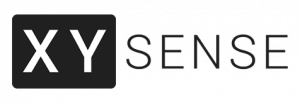New Q3 2023 Workplace Utilization Index reveals a continued glut of desks as average workplace attendance remains at half pre-pandemic levels.
MELBOURNE, AUSTRALIA, November 29, 2023 /EINPresswire.com/ -- Most companies are contending with a sea of empty desks as they work to adjust their offices to reflect today’s work patterns. That’s one of the findings of the latest report on workplace utilization from XY Sense, the actionable occupancy intelligence platform for real estate teams. The Q3 2023 Workplace Utilization Index showed that a staggering 53% of individual desks and workstations sit unused for most or all of every day in offices worldwide. This latest edition of the quarterly workplace benchmarks insights showed global workplace utilization at 27% – about half the pre-pandemic level.
The XY Sense Workplace Utilization Index is a quarterly report aggregating data from 34,264 workspaces across the US, UK, and APAC. The data comes from XY Sense’s rapidly growing footprint (up 37% since Q2) of industry-leading occupancy sensors installed in corporate offices globally. These privacy-preserving sensors passively and anonymously monitor office areas to collect real-time insights on the number and location of workers present, and dwell times associated with specific floor plan features such as desks and meeting rooms. XY Sense sensor data is accurate to within one foot (~30 cm) and is updated every two seconds for maximum precision.
While return-to-office mandates from major global companies were widely publicized across Q3 2023, XY Sense data showed no material change in workplace utilization compared to the previous quarter. The UK led the world’s highest workplace utilization at 43%, while the US showed the lowest, at 21%. The rate in APAC was 27%.
“All these empty desks are vivid proof that workplace mandates are having little effect on worker behavior patterns, said report author XY Sense Head of Customer Success Shivaun Ryan. The “all-stick,” “...or else” mandates from corporate exec teams to drive more workplace attendance and real estate utilization are officially a flop. It’s time for companies to address their excess office space head-on and begin redefining their workspaces better to reflect changing employee needs and preferences.”
The Workplace Utilization Index showed that hybrid work behaviors – in which workers split their weeks between in-office and at-home work – have reshaped the rhythm of the in-office workweek. Workplace utilization rates are 79% higher midweek than on Mondays and Fridays. Workplace utilization was highest on Tuesdays, at 34%, and lowest on Fridays, at 15%. This pattern mirrors what we have reported in previous Index reports, with these and overall occupancy rates down slightly because of the high proportion of workers that take vacations in Q3.
Hybrid has altered how many teams schedule activity, with workers devoting much in-office time to meetings. The data shows that a knowledge worker in the office is highly unlikely to be desk-bound for more than 3 hours. While many desks sit vacant, companies sometimes struggle to offer sufficient meeting space in their current workplace configurations, which devote most floor space to individual workstations. Average utilization of meeting spaces was 23% higher than for desks – on midweek days with high in-office attendance, meeting space can be hard to book.
Continued Shivaun Ryan, “Workplace leaders are well aware that shortages of meeting space create barriers to continued improvement in worker time spent in offices. When teams come in to meet but cannot find a suitable place, they question the value of ever spending time in the office.”
In addition to wasted desks and space, the Index also showed that conference rooms have an average capacity far in excess of the size required for most meetings. Worldwide, in-person meeting attendance averages about 2 persons, while meeting spaces average far higher capacity. Rooms with greater than 7-person capacity are less than 37% full on average. These metrics are motivating some companies to deploy more phone booths and mini-meeting pods, as well as subdivide meeting areas into more spaces appropriate for discussion and collaboration. Enclosed meeting rooms that afford greater privacy were far more popular across all regions. Enclosed meeting rooms saw 50% utilization, while open collaboration areas were utilized just 14% of the time.
Alex Birch, co-founder and CEO of XY Sense, said, “Mandates or not, office utilization for most companies has now stabilized at ~50% pre-pandemic levels. As companies explore rightsizing, the answer isn’t as simple as just shedding 50% of office space. Companies need to be able to support ‘surge’ Tuesdays and Wednesdays and adapt offices for new hybrid work styles, all while addressing the incredible amount of waste in the current system. It’s a balancing act that is testing many companies and having the right data is the key to solving the challenge.”
Many other insights are available in the report, which is available now at no cost.
About XY Sense
XY Sense is the actionable occupancy intelligence platform for corporate real estate teams. Our privacy-first, AI-powered Sensors and Workplace Analytics Platform deliver the richest real-time insights and integration capabilities for workplace teams working to control real estate costs, boost space productivity, and orchestrate office environments that people love. With superior coverage (95 sqm/1,022 sqft/20 desks), accuracy (<1ft), actionable out-of-the-box analytics, and more sustainable installation capabilities (~80% less cabling required,) XY Sense has become the occupancy sensor platform of choice for companies looking to drive ROI from workplace real estate. XY Sense has offices in Australia and the United States and serves custome
Diane Anderson
Word Play Agency
+1 415-254-9086
email us here



